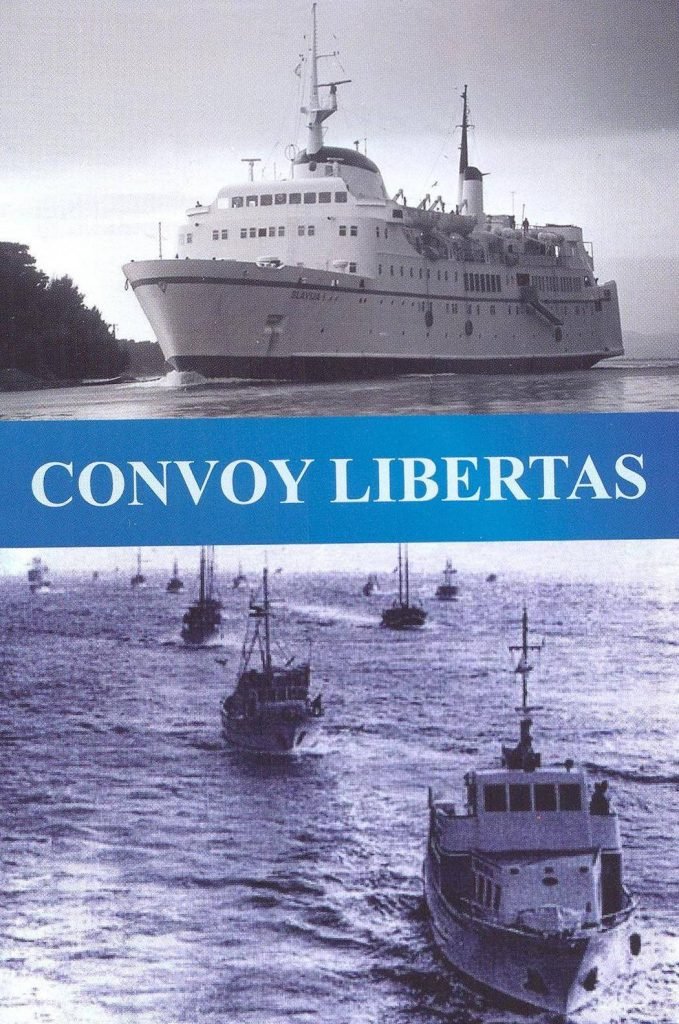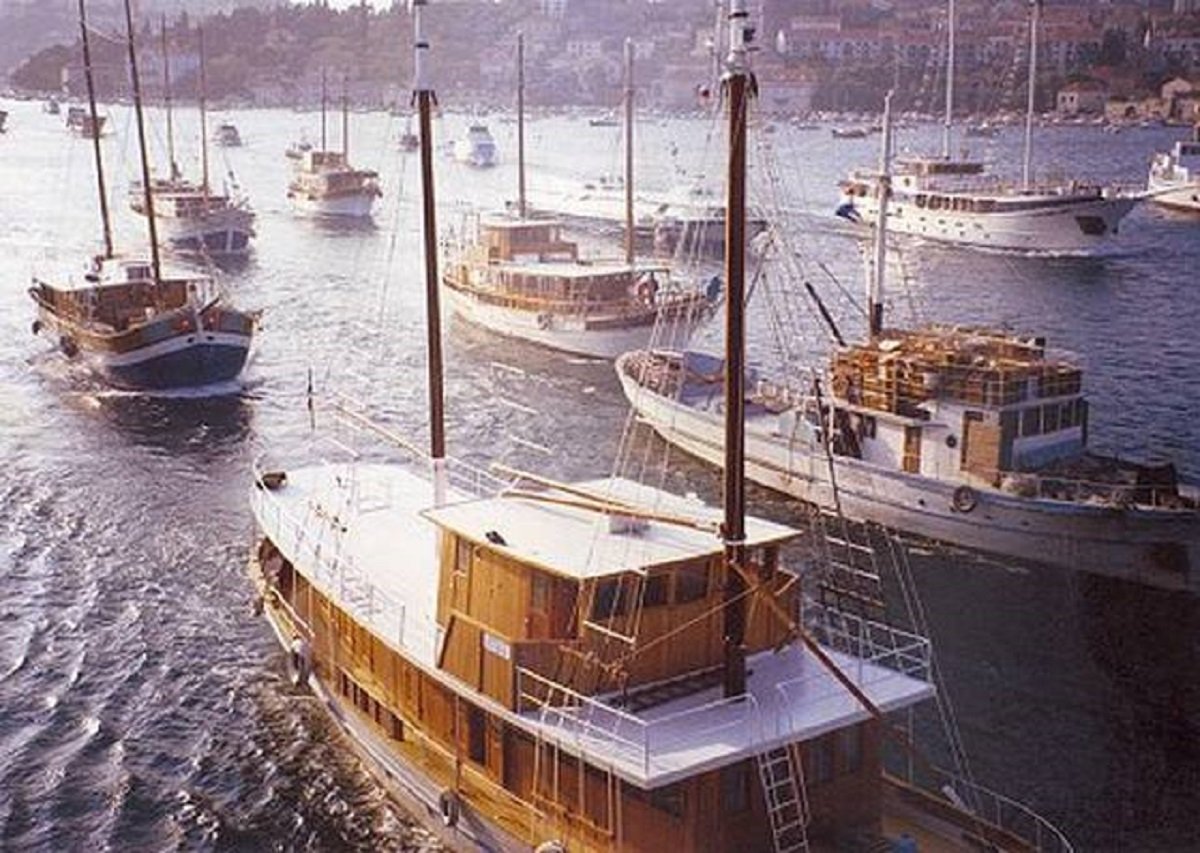The Dubrovnik hinterland was fiercely attacked by the Yugoslav People’s Army (YPA) and Montenegrin reservists in early October of 1991. After the occupation of the suburb of Slano, the city was completely blockaded and its 50,000 residents and refugees were gradually left without electricity, water, food and medicine.
As a result, the Sveti Vlaho Fund for the Salvation of Dubrovnik, the Croatian Writers’ Association and Matica Hrvatska initiated the “Libertas Convoy” to deliver necessary humanitarian aid. The idea of the effort was to gather as many vessels and smaller ships possible, led by the ferry “Slavija”, to break through the blockade and sail into Dubrovnik’s port of Gruž.

The ferry “Slavija” left Rijeka for Dubrovnik on 28 October and the convoy was joined in Split the following day by Yugoslav President Stjepan Mesić. Croatian Prime Minister Franjo Gregurić and numerous other politicians, cultural and public figures joined Mesić aboard the ship the following day and they were accompanied by tourist and fishing boats, sailboats, tugboats and numerous smaller vessels from all over the Adriatic who spontaneously joined the convoy. The voyage went unhindered all the way to the Mljet Channel where the Yugoslav Navy and its gunships halted all vessels, at which point President Mesić explicitly told Admiral Stane Brovet the following:
We are going to Dubrovnik. Shoot if you decide to but know that you will be held responsible for it!
After long and arduous negotiations, the Yugoslav military relented and released the ships after they were searched in Dubrovnik. The citizens of Dubrovnik were deeply moved and welcomed the convoy with lit candles but there was no mass reception in the port due to fear of being shelled. Interestingly, several volunteers also arrived in Dubrovnik with the “Libertas” convoy to defend the besieged Croatian city. Two weeks later on 14 November, the ship “Slavija” departed the port of Gruž to return to Rijeka with almost four thousand people comprised mostly of the elderly, women and children. Krešo Milas, Commander of the Dubrovnik Civil Protection Staff, recalled the evacuation Oliver Pezo’s book “Zagonetka pobjede” (eng. “The Riddle of Victory”):
When the ‘Slavija’ was supposed to set sail on 14 November, everything was precisely planned including a list of names of those that were to depart that day but around 8:00 AM a wave of people suddenly appeared and we could not prevent them from boarding the ship. We then cleared approximately 100 vehicles from the ship’s garage and filled it with a significant number of people. I must emphasize that we undertook a selection of passengers and no men under the age of 60 made the journey.
The ship barely stayed afloat because its maximum capacity was only a thousand passengers but the “Slavija” fortunately reached Rijeka safely.
Cover pohoto by Feđa Klarić
Sources
Literature
Pezo, Oliver. Zagonetka pobjede : velikosrpska agresija na Dubrovnik 1991. godine. Dubrovnik: ArtFORMAT; Zagreb: Hrvatski memorijalno-dokumentacijski centar Domovinskog rata, 2015
TV
TV Kalendar. Croatian Radio-television. author Tomislav Šulj, editor Vladimir Brnardić, October 31, 2016
Graduated with a Master’s Degree in History from the University of Zagreb. He has worked at the Croatian History Museum and as a researcher for the popular TV Calendar program for Croatian Radio and Television. He has authored several books and documentaries about Croatia’s Homeland War and is the creator/producer of the immensely popular “It Happened on this Day – Homeland War” Facebook page as well as the online portal Domovinskirat.hr. Borna also is the host and editor of the daily segment “Patriotic Minutes” on Croatian Catholic Radio. He created CroHis to promote the values of the Homeland War and ensure that the sacrifices of those who defended Croatia’s independence would not be forgotten.

